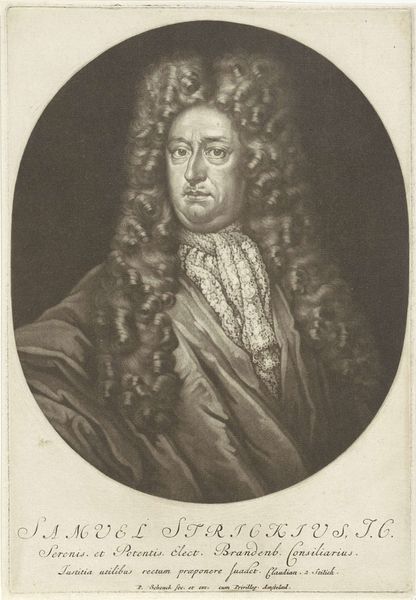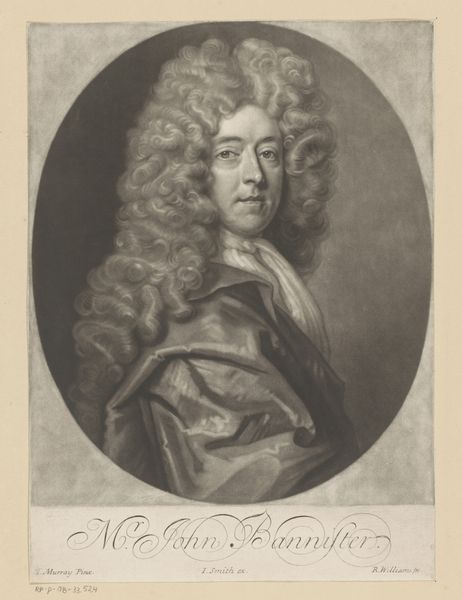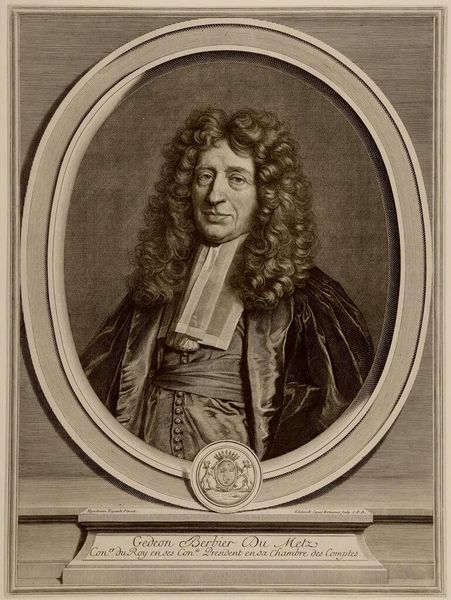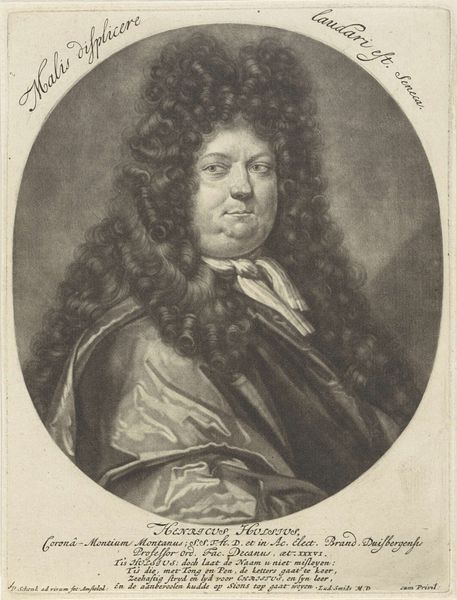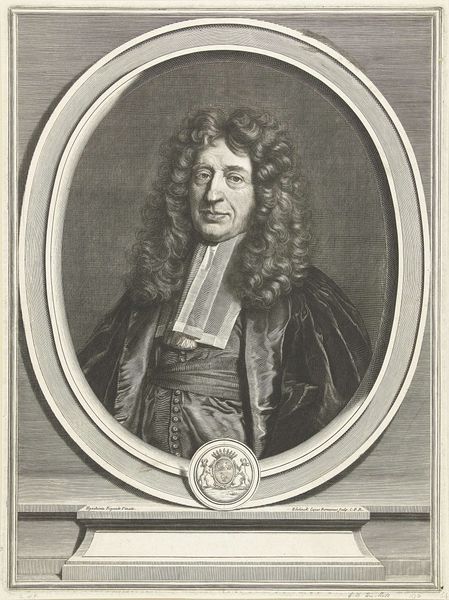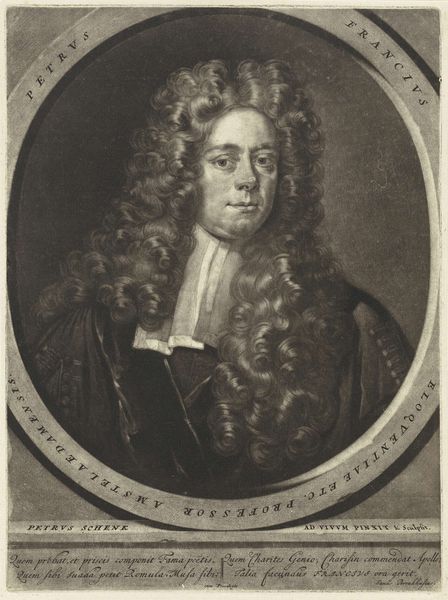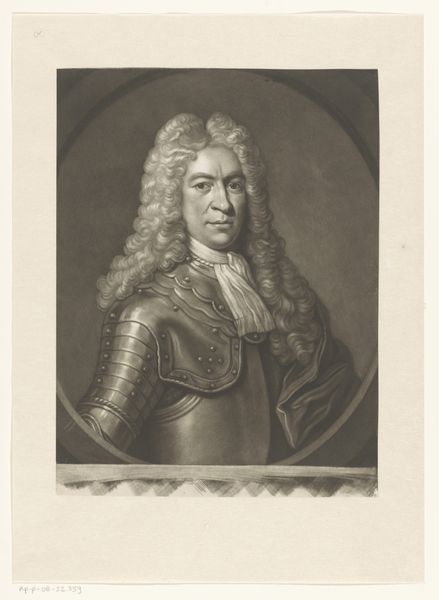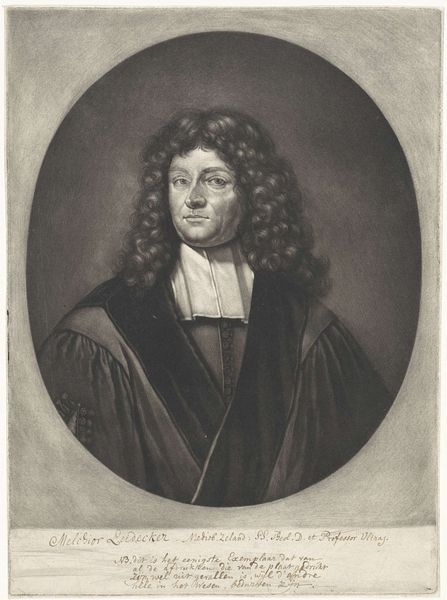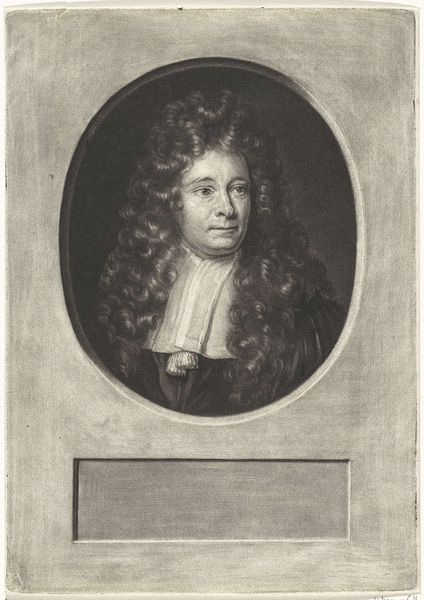
Dimensions: height 265 mm, width 214 mm
Copyright: Rijks Museum: Open Domain
Editor: So, here we have a portrait—"Portret van een onbekende man met pruik"—by George Andries Karsen, dated 1863. It's a print, an engraving in the baroque style, depicting an unknown man in a wig. What strikes me most is the meticulousness of the line work. How can you read this work, especially from a materialist viewpoint? Curator: Indeed, that intense labor is something to behold! This engraving, this 'Portret', throws into sharp relief the material conditions of image-making in 1863. Consider the copper plate: a raw material transformed through skilled labor. The lines etched, each a physical act of removal, of *making* absence visible. The 'style' we identify as baroque--the elaborate wig, the historical clothing. Where do they come from? Editor: I suppose from a desire to emulate past elites, through a combination of meticulous production and strategic social symbolism... Curator: Exactly! So, consider that this isn't merely a "portrait." It’s a *reproduction*, one readily available for consumption. A copy. This brings forth fascinating questions about who owns the image. Was it accessible? In whose hands did power reside? Whose labour does this production hide? And do we see a portrait, or the material production of identity? Editor: I'm realizing how much the process of creating prints contributes to their meaning. Curator: Precisely. The image isn't just a static representation; it's a document of labor and access within a very particular social fabric. And isn't it interesting how we often overlook the physical cost involved in something so visually ‘simple’? Editor: It's changed my view on prints. Now I'm really thinking about production, distribution, and ultimately, consumption. Thanks!
Comments
No comments
Be the first to comment and join the conversation on the ultimate creative platform.
